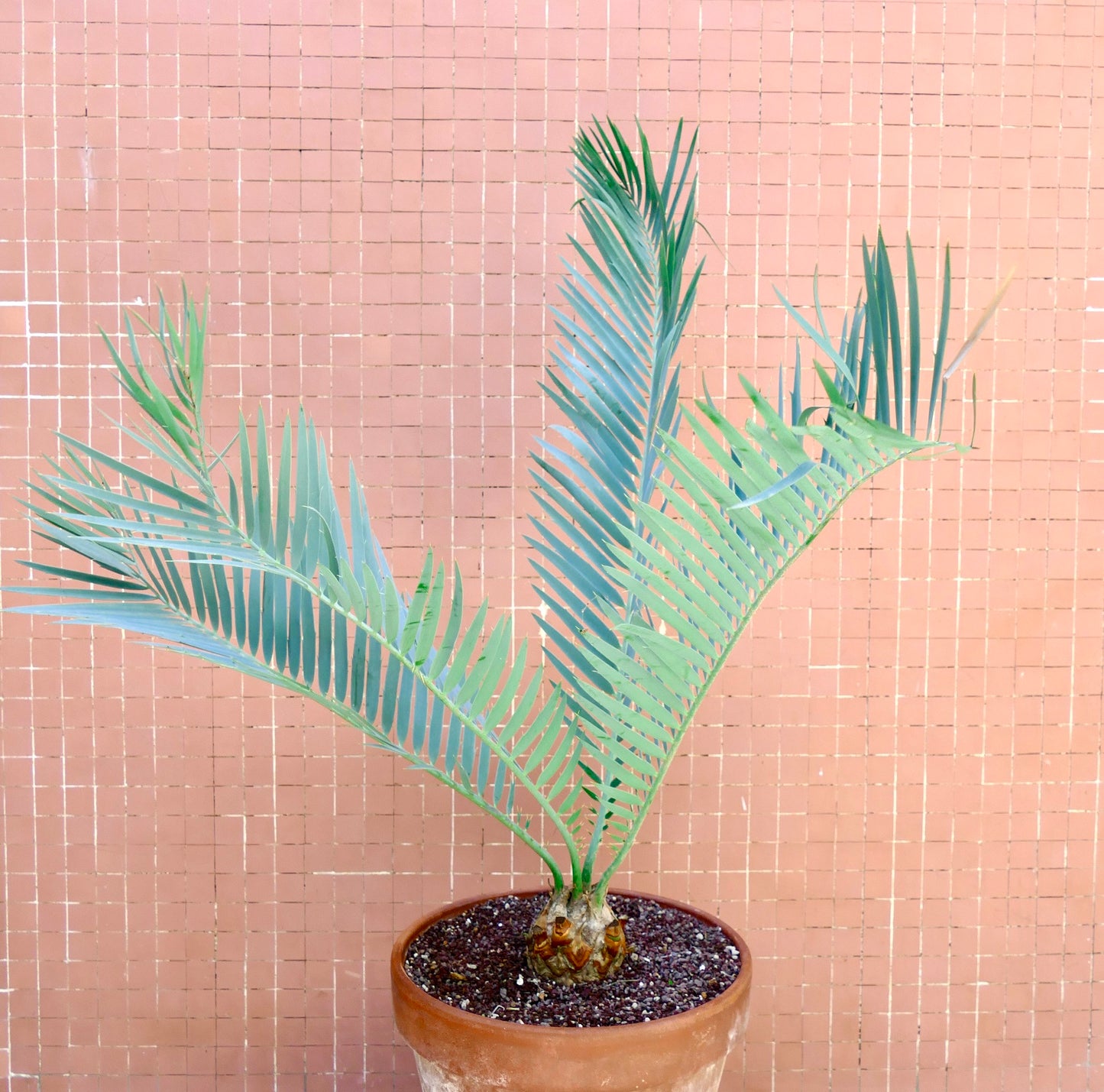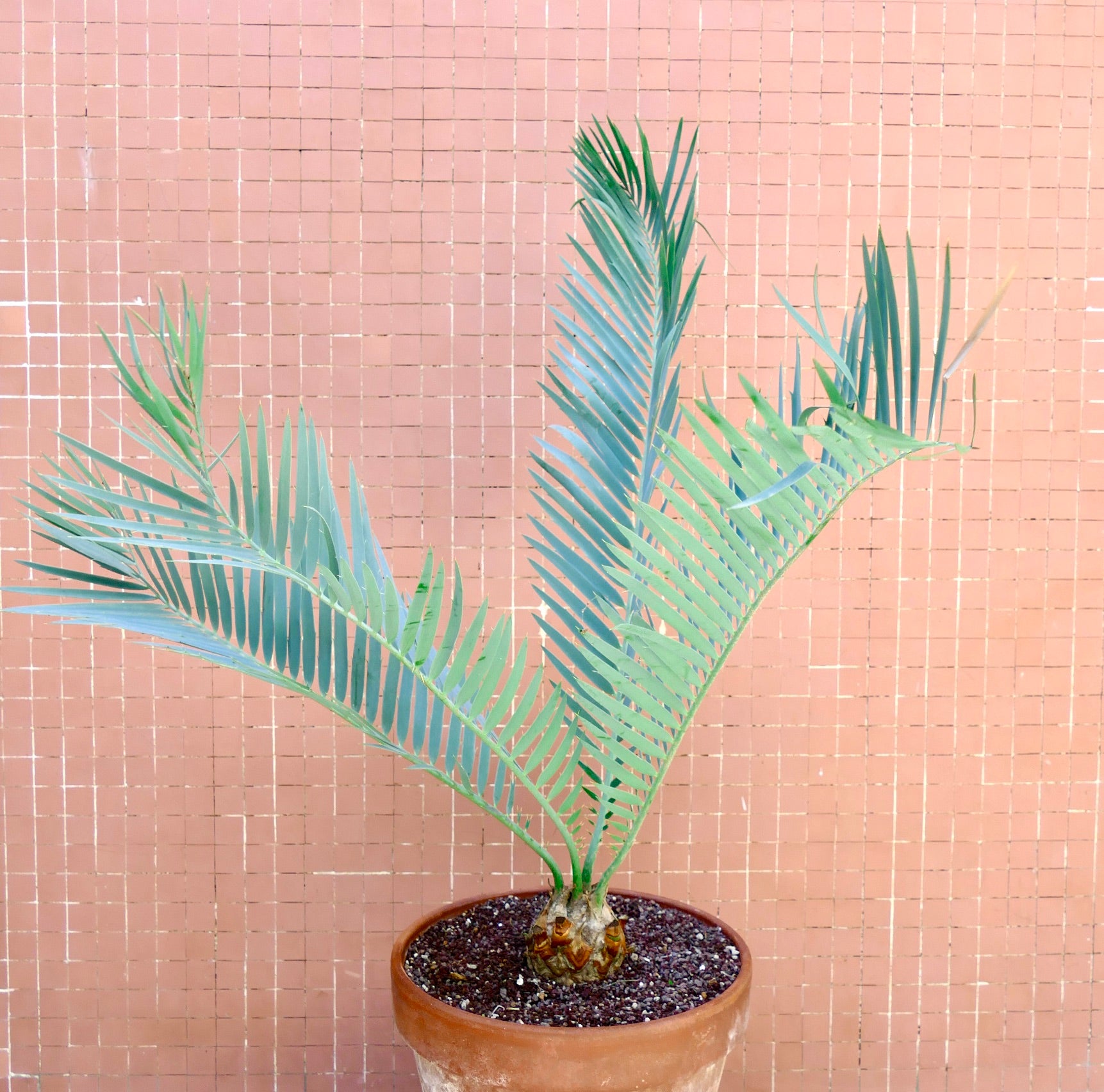Encephalartos dyerianus, commonly known as the "Dyer's Cycad," is a visually stunning species of cycad native to Kenya. Here's a description of this captivating plant:
1. Morphology:
-
Stem: Encephalartos dyerianus typically grows as a single-stemmed plant, although occasionally it may produce offsets, forming a clump. The stem is robust and can reach heights of several meters. It is covered with persistent leaf bases and has a smooth, grayish-brown to tan bark.
-
Leaves: The leaves of E. dyerianus are arranged in a dense rosette at the apex of the stem. They are long, stiff, and pinnate, with numerous leaflets arranged along the central rachis. The leaflets are often a striking blue-green color, which is one of the distinctive features of this species.
-
Cones: As with other cycads, Encephalartos dyerianus is dioecious, with separate male and female plants. Male cones are elongated and cylindrical, while female cones are larger and more rounded. The cones emerge from the center of the plant and are typically covered in a dense layer of woolly hairs when young.
2. Habitat:
- Encephalartos dyerianus is native to mountainous regions in Kenya, where it grows in rocky, well-drained soils. It is often found in montane forests or scrublands at elevations of 1,500 to 2,000 meters above sea level.
3. Conservation Status:
- Encephalartos dyerianus is listed as endangered in the wild due to habitat destruction, over-collection for horticultural trade, and other human activities. Conservation efforts are underway to protect remaining populations and prevent illegal collection.
4. Cultural Significance:
- In addition to its ecological importance, Encephalartos dyerianus is valued for its ornamental beauty and is often cultivated as an exotic plant in botanical gardens, private collections, and landscapes around the world.
5. Conservation Efforts:
- Conservation efforts for Encephalartos dyerianus include habitat protection, propagation through cultivation, and initiatives to raise awareness about the species' conservation needs. Botanical gardens and arboreta play a vital role in ex situ conservation efforts by maintaining living collections of rare and endangered plants like E. dyerianus.
Encephalartos dyerianus is renowned for its striking appearance, with its blue-green foliage and architectural form. Its conservation status underscores the importance of preserving plant diversity and the ecosystems in which they occur.






